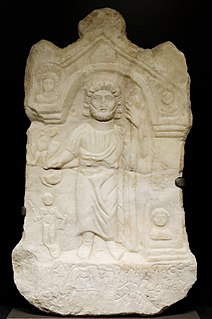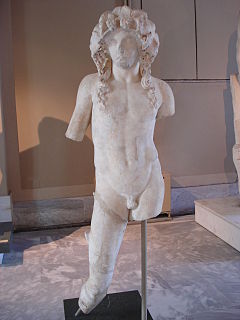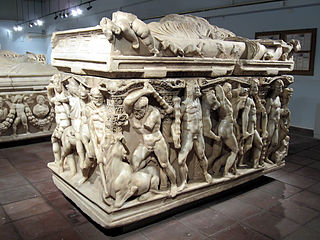 W
WAizanoi, Latinized as Aezani, was an Ancient Greek city in western Anatolia. Located in what is now Çavdarhisar, Kütahya Province, its ruins are situated astride the River Penkalas, some 1,000 m (3,300 ft) above sea level. The city was an important political and economic centre in Roman times; surviving remains from the period include a well-preserved Temple of Zeus, unusual combined theatre-stadium complex, and macellum inscribed with the Price Edict of Diocletian. The city fell into decline in Late Antiquity. Later serving as a citadel, in 2012 the site was submitted for inscription on the UNESCO World Heritage List.
 W
WAmorium was a city in Phrygia, Asia Minor which was founded in the Hellenistic period, flourished under the Byzantine Empire, and declined after the Arab sack of 838. It was situated on the Byzantine military road from Constantinople to Cilicia. Its ruins and höyük are located under and around the modern village of Hisarköy, 13 kilometers east of the district center, Emirdağ, Afyonkarahisar Province, Turkey.
 W
WApamea Cibotus, Apamea ad Maeandrum, Apamea or Apameia was an ancient city in Anatolia founded in the 3rd century BC by Antiochus I Soter, who named it after his mother Apama. It was in Hellenistic Phrygia, but became part of the Roman province of Pisidia. It was near, but on lower ground than, Celaenae (Kelainai).
 W
WBlaundus was a Roman episcopal city in Asia Minor, presently Anatolia, and is now a Latin Catholic titular bishopric.
 W
WColossae was an ancient city of Phrygia in Asia Minor, and one of the most celebrated cities of southern Anatolia. The Epistle to the Colossians, an early Christian text which identifies its author as Paul the Apostle, is addressed to the church in Colossae. A significant city from the 5th century BC onwards, it had dwindled in importance by the time of Paul, but was notable for the existence of its local angel cult. It was part of the Roman – and then Byzantine – province of Phrygia Pacatiana, before being destroyed in 1192/3 and its population relocating to nearby Chonae.
 W
WDocimium, Docimia or Docimeium was an ancient city of Phrygia, Asia Minor where there were famous marble quarries.
 W
WDorylaeum or Dorylaion, called Şarhöyük in Turkish language, was an ancient city in Anatolia. It is now an archaeological site located near the city of Eskişehir, Turkey.
 W
WGordion was the capital city of ancient Phrygia. It was located at the site of modern Yassıhüyük, about 70–80 km (43–50 mi) southwest of Ankara, in the immediate vicinity of Polatlı district. Gordion's location at the confluence of the Sakarya and Porsuk rivers gave it a strategic location with control over fertile land. Gordion lies where the ancient road between Lydia and Assyria/Babylonia crossed the Sangarius river. Occupation at the site is attested from the Early Bronze Age continuously until the 4th century CE and again in the 13th and 14th centuries CE. The Citadel Mound at Gordion is approximately 13.5 hectares in size, and at its height habitation extended beyond this in an area approximately 100 hectares in size. Gordion is the type site of Phrygian civilization, and its well-preserved destruction level of ca. 800 BCE is a chronological linchpin in the region. The long tradition of tumuli at the site is an important record of elite monumentality and burial practice during the Iron Age.
 W
WHierapolis was an ancient Greek city located on hot springs in classical Phrygia in southwestern Anatolia. Its ruins are adjacent to modern Pamukkale in Turkey and currently comprise an archaeological museum designated as a UNESCO World Heritage Site. The site has the Tomb of Philip the Apostle.
 W
WKonya is a major city in south-central Turkey, on the south-western edge of the Central Anatolian Plateau and is the seventh-most-populous city in Turkey with a metropolitan population of over 2.2 million. Konya is a large and industrially developed city and the capital of Konya Province.
 W
WLaodicea Combusta or Laodicea, and later known as Claudiolaodicea, was a Hellenistic city in central Anatolia, in the region of Pisidia; its site is currently occupied by Ladik, Konya Province, in Central Anatolia, Turkey.
 W
WLaodicea on the Lycus was an ancient city built on the river Lycus (Çürüksu). It was located in the Hellenistic regions of Caria and Lydia, which later became the Roman Province of Phrygia Pacatiana. It is now situated near the modern city of Denizli, Turkey. In 2013 the archaeological site was inscribed in the Tentative List of World Heritage Sites in Turkey.
 W
WAkşehir is a town and district of Konya Province in the Central Anatolia region of Turkey. According to 2000 census, population of the district is 114,918 of which 63,000 live in the town of Akşehir. The town was known in the Roman and Byzantine empires as Philomelium or Philomelion respectively.
 W
WSynnada was an ancient town of Phrygia Salutaris in Asia Minor. Its site is now occupied by the modern Turkish town of Şuhut, in Afyonkarahisar Province.
 W
WTemenothyra, or Temenothyrae or Temenothyrai, was a town of ancient Lydia, or of Phrygia, inhabited during Roman and Byzantine times. It became a bishopric; no longer the seat of a residential bishop, under the name Temenothyrae it remains a titular see of the Roman Catholic Church.
 W
WTiberiopolis was a town in the Roman province of Phrygia Pacatiana, mentioned by Ptolemy, Socrates of Constantinople and Hierocles. At various times, it was considered as part of Phrygia, Isauria, and the late Roman province of Pisidia.
 W
WTripolis on the Meander – also Neapolis, Apollonia, and Antoniopolis – was an ancient city on the borders of Phrygia, Caria and Lydia, on the northern bank of the upper course of the Maeander, and on the road leading from Sardes by Philadelphia to Laodicea ad Lycum. It was situated 20 km to the northwest of Hierapolis.